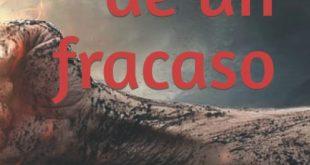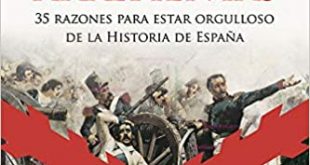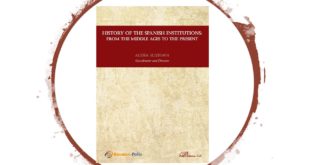
The war began as a military coup. But the Spanish army’s attempt to overthrow a leftist government and clamp down on growing political and social chaos soon morphed into the major controversy in European affairs in the period between the rise of Nazism and the countdown to World War II. Despite a nonintervention agreement signed by most European nations, foreign aid was a constant, and there was eventually limited military participation by Hitler and Mussolini on one side and Stalin on the other. The propaganda struggle mobilized partisans throughout Europe and the Americas. Those who supported the generals defined the Nationalist cause as a struggle against communism and on behalf of Western and Christian civilization. Those who favored the Republican revolutionaries called it a war of democracy versus fascism. The struggle to «frame» the conflict continued for decades after the fighting stopped.
The Spanish HolocaustBy Paul PrestonNorton, 700 pages, $35
During and right after the war, much attention was given to heroes by the Nationalists and the Republicans. But in the 21st century, they have preferred to stress how much they suffered at the hands of the opposing side. This preference gave rise in 2006, on the 70th anniversary of the war’s beginning, to the bizarre War of the Funeral Notices («guerra de las esquelas») in Spanish newspapers, where partisans of both sides commemorated the deaths of relatives, particularly any who had been the victims of political execution.
It was something of a departure in democratic Spain. The leaders of the transition that took place after Francisco Franco’s death in 1975—he had ruled Spain since the Nationalist victory in 1939—created the first stable democracy in their country’s history. They had agreed that history was best left to historians and that the grim events of their recent past would not be invoked for partisan purposes.
A Republican poster warning Madrid’s residents to watch what they say for fear of aiding the enemy Getty ImagesIn 1977, the first democratically elected parliament, at the particular behest of the left, voted a universal amnesty from prosecution for all politically connected crimes, however violent. In the wake of the dictatorship’s collapse, historical studies—from scholarly research to popular accounts—had begun focusing on the civil war and the atrocities that had occurred, but such concerns were not part of political life. The amnesty ruled out any juridical approach to what is called «historical justice.»
This understanding endured for approximately 15 years, until the Socialist government of Felipe González faced the danger of not winning re-election in 1993. For campaign purposes, it began waving the bloody shirt, charging that, if elected, the conservative Partido Popular (PP) would bring back «Francoism.» That claim may have helped the Socialists in 1993, but three years later the PP won the general elections and then gained an absolute parliamentary majority in 2000.Electoral weakness encouraged the Spanish left to look for further justification in history. Reinforced by the new international culture of victimization, a «historical memory» movement arose in Spain after 2000 alleging that the civil war and the crimes of Franco were being ignored. (It showed no interest in the crimes of the revolutionaries.) The movement has been both Jekyll and Hyde. It has encouraged the excavation, identification and reburial of the remains of leftist victims of the civil war resting in common graves: a commendable exercise in terms both of history and humanitarianism. But it has also politicized historical work, sometimes to the point of hysteria.
Even the most academic scholars studying the events of 1936-39 routinely employ words such as «annihilation,» «extermination» and «holocaust» in their book titles. Not surprisingly, many in Spain feel that the whole enterprise has largely been a political ploy, not seriously serving either history or genuine memory.
The Socialists regained power in 2004 and in 2007 passed a Law of Historical Memory, which gave a sort of official interpretation of the Spanish Civil War: The revolutionaries who opposed Franco had fought for «democracy» rather than for their revolutionary utopias. It also provided subsidies for a variety of projects examining the war and for the continued investigation and excavation of common graves.
An anarchist labor union poster reading ‘Let’s Strike the Definitive Blow’ Getty Images Paul Preston’s «The Spanish Holocaust» is the first major contribution by a non-Spanish historian to these battles. He is Britain’s senior scholar of modern Spain, with many works to his credit, ranging from a massive biography of Franco to a well-written account of the democratic transition after the dictator’s death. His latest book—unlike most of the books in Spanish—has the merit of looking in detail at the atrocities committed by both sides. His interpretation, though, is hardly impartial. Mr. Preston devotes his first 200 pages to the origins of the war, which are found to lie almost exclusively with the depravity of Spanish conservatives, capable of any enormity and of going to any length to cancel «reforms» in the early 1930s. «Reform» is a particularly loaded term in this field, being the code among leftist historians for the revolutionary process that Spain underwent between 1930 and 1936. There were four violent revolutionary insurrections between 1932 and 1934, followed by the systematic falsification of elections and the beginning of an assault on property and institutions under the benign gaze of a leftist government.
Mr. Preston goes on to devote nearly 500 pages to the political executions that occurred in both Nationalist- and Republican-held territory during the war. It is the most extensive treatment that the subject has received in English or in Spanish—though the research on these matters is much less definitive, particularly with regard to statistical data, than it may appear from the way it is presented here. Mr. Preston has done significant research on the Republican repression and contributes to our understanding of several key aspects. He shows, for example, the complexity of assigning responsibility for the Paracuellos Massacres—the execution of several thousand prisoners outside Madrid by Republican militias in late 1936, as the Nationalist forces drove on the city—and is more precise than previous historians about the Soviet role in the arrest and murder of the leftist leader Andreu Nin in 1937.
For all that, though, «The Spanish Holocaust» is burdened by an age-old perspective of the left in which the atrocities committed by the Republicans are at least partially excusable because they were carried out by «uncontrollables,» mainly anarchists, and not as part of a central policy, whereas the crimes of the Francoists are considered to have been centrally planned. The revolutionary regime was indeed semi-pluralist, as political scientists would say. But the different leftist groups frequently collaborated when they killed, sometimes with the cooperation and participation of the Republican government.
A Republican poster urging Catalans to help defend besieged Madrid. Getty ImagesIt was, moreover, the Republican government that had originally armed the revolutionary movements and enabled them to embark on arbitrary executions. The atrocities by each side were not at first simply a «response» to the other, as their partisans maintain, but began simultaneously and on a large scale. The stage had been set by the ever-increasing violence that attended the revolutionary process during the years of the Republic, climaxing in 1936.The idea of «accidental» leftist terrorism versus a central plan by the Francoists for «extermination» was a mainstay of Republican stories from the early days of the civil war. Nowadays in Spain even a few of the partisan left-wing historians have gone beyond it. Mr. Preston, rather than presenting a fully objective historical analysis or interpretation of violence against civilians during the Spanish conflict, is recapitulating civil-war-era propaganda.
He presents no evidence of any plan of «annihilation,» «extermination,» «genocide» or «holocaust,» to use his favorite terms. It is clear enough that the Francoists generated more victims than did their opponents. In such affairs, the winners always kill more. Yet the special military tribunal set up by Franco toward the end of 1936 to purge newly occupied areas of Republicans examined more than 30,000 cases during the next two years and dismissed half of them. Hardly a process of «extermination» or «holocaust.» It was a brutal war for combatants and civilians, but, in contrast to the contemporary horrors in Turkey, Russia or the Nazi imperium, the overall loss of life was not great.
Nor is the evidence that Mr. Preston does present quite as clear as he makes out. The truth of the matter is that definitive research concerning the political executions has been completed for only a few regions of Spain. Most monographic studies suffer from methodological flaws or limitations and will have to be redone, and it is still necessary to be cautious with regard to statistics. Yet there are enough careful studies to make some reliable estimates, and the ones offered by Mr. Preston are within an appropriate range. His figure of 50,000 executions by the Republicans cannot be far wrong. The conclusion that the Francoists did away with slightly more than 100,000 people is probably an exaggeration, but not a wild one. A figure nearer 70,000 might be more accurate. Curiously, the figure he gives for executions by the Franco regime after the war ended (20,000) is, in my judgment, too low. The correct statistic is probably nearer 30,000.
What is more serious is Mr. Preston’s failure to explain how this «holocaust» or policy of «extermination» came to an end several years after the war with the vast majority of the defeated left in Spain still very much alive. When Franco finally had the Republicans completely at his mercy after the collapse of the republic in 1939, he did not «exterminate» them. That there was not a true «holocaust» is shown by the census of 1940, which revealed that population growth had not been greatly impeded by the events of the preceding decade. And any concern that this was an inaccurate census is put to rest by the fact that its data are consistent with the 1950 census.
One needs only to do the math. At the end of the civil war, Spain had a population of approximately 25 million, some four million of whom at one time or another had participated in leftist organizations. Of these, Franco’s police arrested about 10%. If we accept my upwardly revised estimate of 30,000 postwar executions, that would indicate the killing of approximately eight-tenths of 1% of Spain’s actively leftist population, with 99.2% surviving. This amounts to neither «holocaust» nor «annihilation,» however much it must offend our more humane 21st-century sensibilities. Rather than implementing some radical new Hitlerian or Pol Pot-like scheme, the essentially traditionalist Franco followed the policy of victors in civil wars throughout most of history: slaughtering the leaders and main activists of the other side while permitting the great bulk of the rank and file to go free.
Mr. Preston declares that one of his chief goals with «The Spanish Holocaust» is to place the repressions in broader perspective, but here his failure is absolute. There is not the slightest attempt to compare the atrocities in Spain with those in any of the other revolutionary civil wars of early-20th-century Europe. If he had bothered to do the work, Mr. Preston would have found that, for example, the repression carried out by the democratic parliamentary government of Finland in 1918 was equivalent to that of the Spanish, whether of the «good» left or the «bad» right.
The literature of atrocity is currently enormously popular and almost universally applauded, but a historian has the responsibility to put such matters in critical perspective. «The Spanish Holocaust» is a monumental exercise, one presenting a great deal of data and research but also reproducing some of the oldest stereotypes of the Spanish Civil War. It must be judged a failure.
—Mr. Payne’s many books on modern Spain include «The Collapse of the Spanish Republic, 1933-36″and «The Spanish Civil War, the Soviet Union and Communism, 1931-39.»
UNDERSTANDING THE SPANISH CIVIL WAR
The Spanish Civil WarBy Hugh Thomas (1977)At nearly 1,100 pages, this is the classic narrative of the war. It remains the best and most exhaustive account, one written without bias.
Modern Warfare in Spain: American Military Observations on the Spanish Civil WarEdited by James W. Cortada (2011)This is a selection of reports by American military attachés in Spain. They provided objective professional evaluations and had no political ax to grind and so remain one of the best sources of contemporary testimony.
Comrades and Commissars: The Lincoln Battalion in the Spanish Civil WarBy Cecil D. Eby (2007)The Lincoln Battalion was a group of American volunteers, mainly but not exclusively Communists, who fought on the Republican side as part of the famous International Brigades. This well-researched, vividly written account shows great sympathy for the volunteers but also a firm grasp of the devious politics involved.
Franco’s Justice: Repression in Madrid After the Spanish Civil WarBy Julius Ruiz (2005).This is both the most thoroughly researched and most objective account of the repression by Franco in the Spanish capital after the war was over. Mr. Ruiz’s fine pendant study of the Red terror in Madrid during the war has just been published in Spain and awaits English publication.
Republic of Egos: A Social History of the Spanish Civil WarBy Michael Seidman (2002)As the only account of the responses and the conditions of ordinary people during the civil war, this is an important book. The individuals encountered are mostly not fanatics of left or right; they are representative of the way war is experienced outside the headlines.
* Wall Street Journal, April 13, 2012
- España
- transición
- Guerra Civil
 Kosmospolis Revista digital de Historia, Política y Relaciones Internacionales kosmos-polis
Kosmospolis Revista digital de Historia, Política y Relaciones Internacionales kosmos-polis






